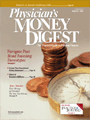Close-Up: Fund Ratings
Presented by McNeil, Makers of Tylenol
n
Fund Ratings: . Nationally recognized statistical rating organizations that provide credit ratings for money market funds, bond funds, and stock funds. These ratings provide investors with a measure to some of the risksassociated with investing in a fund.
In recent years, it seems as though rating mutualfunds has become a national obsession. Certainly,there is no shortage of data available for learningabout one or more funds that you are consideringas investment vehicles. For some investors, there seems tobe too much data. Navigating this landscape to find theuseful information can be challenging.
Morningstar Mutual Funds
Mutual Funds for Dummies
One of the mainstays of mutual fund information is (www.morningstar.com),which provides single-page fund summaries that offer asnapshot summary of lots of data, and there's enoughinformation on each page to make the averageinvestor's head spin. (Hungry Minds; 2001) offers a summary of what informationis contained in each section, and what thatinformation means to the investor.
Bond Fund Pages
For starters, the Prospectus section provides a summaryof the general investment objectives and limitationsof the particular fund. The Portfolio Manager(s) sectionhighlights the work and educational background of theperson or people managing the fund. Though not criticalinformation, it's nice to know who's minding the store.
Remember
The Performance section is divided into two parts.The first part indicates the total amount that the fund'sinvestors either made or lost for each quarter during themost recent 5 years. The second part, called TrailingReturns, displays annualized total return informationover longer time periods. : Knowing a fund'shistory is important, but it should not be used as a predictorof future results.
Mutual Funds for Dummies
The Portfolio Analysis is an important section andis divided into three parts. The first, Current InvestmentStyle, indicates the types of bonds the fund mainlyholds at the present time. The Special Securities partdetails the fund's holdings in riskier types of securities.According to , it's nice tosee all zeros here. Lastly, the part called SectorBreakdown quantifies the fund's current holdings of themajor types of bonds.
The Analysis section is extremely helpful, particularlyif interpreting numbers is not your strong suit. Analystsuse available information as well as interviews withfund company managers to summarize the fund strategies.The section could provide you with useful insight.
In contrast, the book notes that the HistoricalProfile, which rates funds from 1 (worst) to 5 (best), isoverused and abused. "Funds with 3, 4, and 5 starsoften make the most sense for many investors,"Morningstar states. But the book cautions, "More starsare not necessarily better than less, and vice versa."
Lastly, the Risk Analysis section provides informationon the fund's average star rating over all the monthsthat it has received such a rating. This information isimportant because it provides a sense of the consistencyof the fund's rating over time.
Stock Fund Pages
The information contained on a stock fund page isvery similar to that found on a bond fund page.However, there are two key differences.
The Portfolio Analysis, a summary of the fund'sholdings, is the most important area of difference betweena stock fund page and a bond fund page. Hereyou will find the total number of securities the fundcurrently holds and a list of its top 25 holdings. TheCurrent Investment Style part of the section classifies afund's current stock holdings (eg, it will identifywhether they tend to be growth or value stocks). TheComposition part of the section indicates whether afund is holding major cash positions and whether thefund invests in securities other than stocks.
Market Cap illustrates how a particular fund hasallocated its holdings among stocks of companies ofvarying sizes. Sector Weightings breaks down a fund'sstock holdings by industry, comparing the holdingswith those of the S&P 500.
There are no fund gurus when it comes to understandingand rating a mutual fund. But the more youunderstand about the information that is available, thebetter equipped you'll be to make educated investmentdecisions in the future.
Mutual Funds for Dummies
Missing Fund RatingsInformation is important when making investmentdecisions. But too little information can be deadly.That's the case with fund ratings, says Eric Tyson, authorof . He points out that themost common mistake investors make is focusing toomuch on the ranking of specific funds.
For example, Tyson says that Morningstar's rankingsystem is misleading for two reasons. First, itmakes some fund categories falsely look better thanothers. "Morningstar looks at what's called risk-adjustedperformance. Risk is measured by thevolatility of a fund's share price over time. Becauseinternational securities don't always move in tandemwith US securities, a fund's holding of bothtypes lessens the volatility of the fund's value." Sowhen comparing fund ratings, look closer at theinvestments the funds are holding.
Second, Morningstar rates funds after they havebeen in existence for as little as 3 years. That hardlyqualifies as a lengthy track record, especially if a fundstarted up in the bull market of the 1990s. When analyzinga fund's rating, make certain it has been througha substantial and sustained market decline.
Pop Quiz
1) The section of Morningstar's fund page that providesa summary of a fund's general investment objectivesis called
- The Prospectus
- The Performance
- The Portfolio Analysis
- The Historical Profile
2) The Portfolio Analysis section of a bond fund page isdivided into three parts: Current Investment Style,Special Securities, and
- Trailing Returns
- Sector Breakdown
- Portfolio Managers
- Risk Analysis
3) This section rates funds from 1 to 5 stars:
- The Historical Profile
- The Tax Analysis
- The Risk Analysis
- None of the above
4) The Portfolio Analysis section of a stock fund pageprovides a listing of a fund's top
- 10 holdings
- 20 holdings
- 25 holdings
- 50 holdings
5) When analyzing a fund's rating, make certain it hasbeen through a
- Substantial and sustained market decline
- Strong bull market
- Shaky bear market
- None of the above
Answers: 1) a; 2) b; 3) a; 4) c; 5) a.
